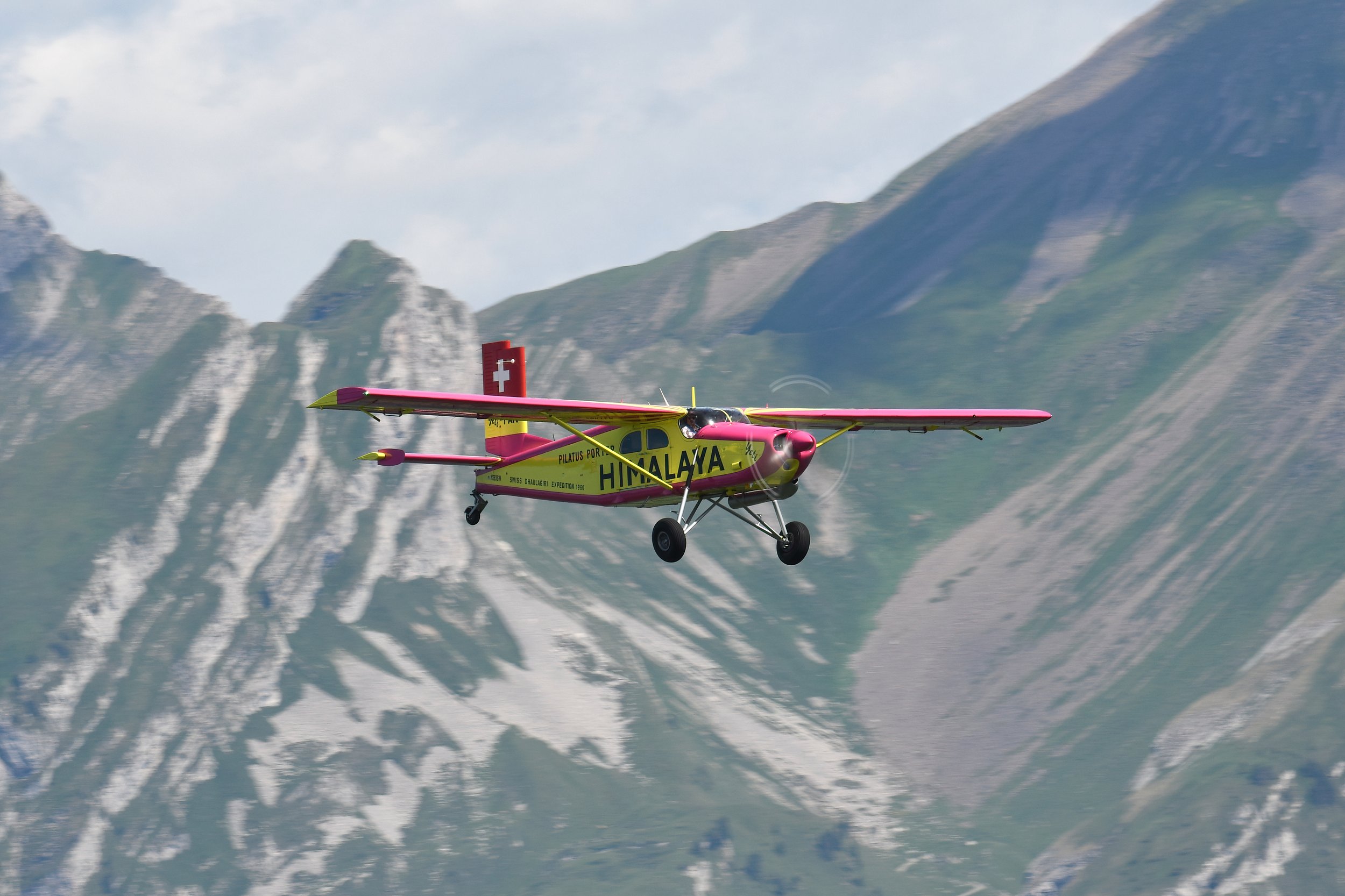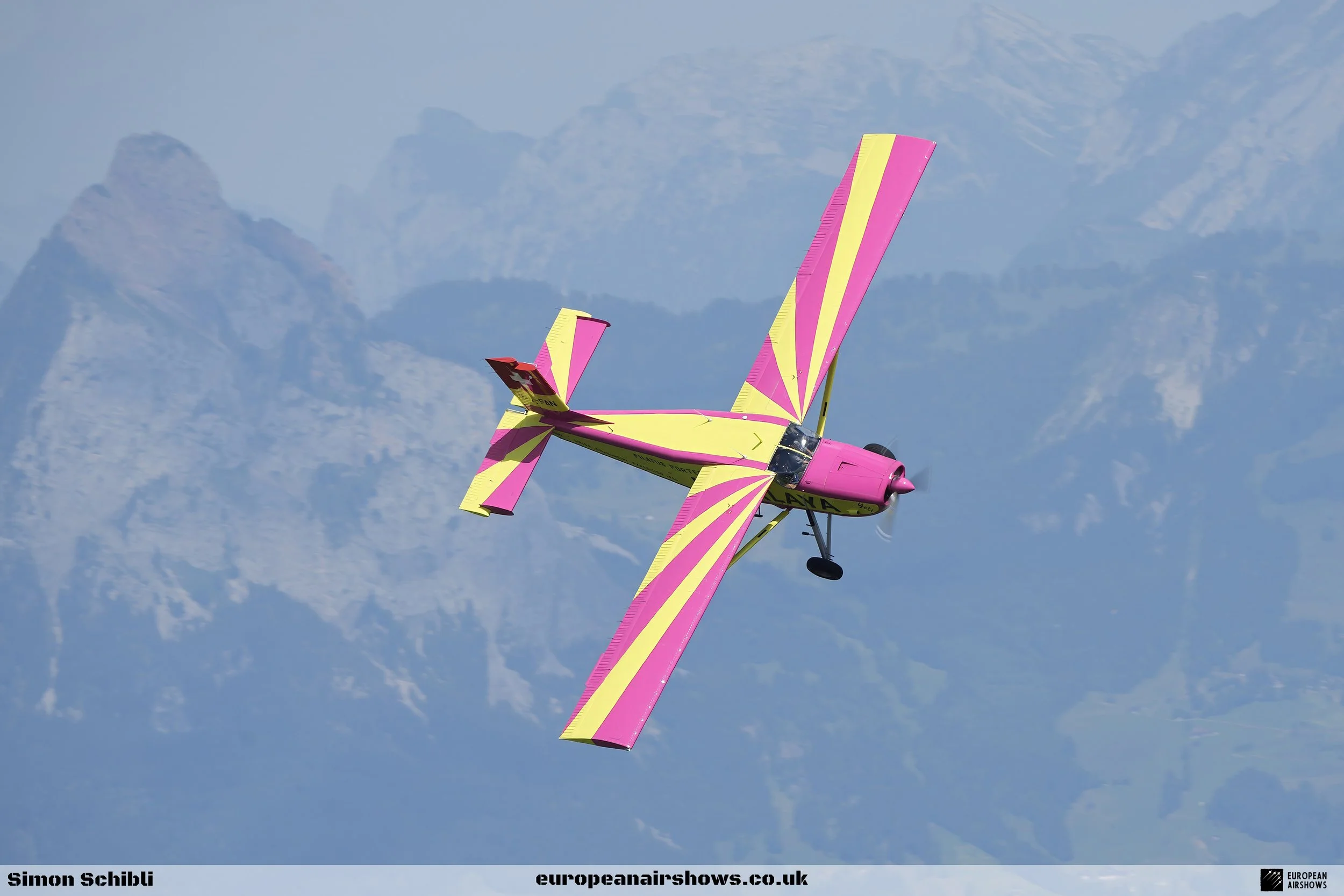
May 4 / Pilatus PC-6 Porter first flight
First Flight 4 May 1959
Pilatus PC-6 Porter
The Pilatus PC-6 Porter is a single-engined STOL utility aircraft designed by Pilatus Aircraft of Switzerland. First flown in 1959, the PC-6 was produced at Pilatus Flugzeugwerke in Stans, Switzerland. It has been built in both piston engine- and turboprop-powered versions, and was produced under licence for a time by Fairchild Hiller in the United States. After 604 deliveries in 63 years, Pilatus ended production in 2022.
On 4 May 1959, the first prototype, powered by a 254 kW (340 shp) piston engine, made its maiden flight. In early May 1961, the first Turbo Porter, powered by a Turbomeca Astazou II turboprop engine, performed its initial flight. In comparison to its earlier piston engine-powered incarnation, the Astazou II-equipped Turbo Porter had an increased gross capacity and top speed, as well as benefitting from the engine's automatic handling functions. These benefits came at the expense of the greater initial purchase cost and higher fuel consumption. Both the piston and turbine-engine versions of the PC-6 became quickly known for their Short Takeoff and Landing (STOL) capabilities, requiring only a very short takeoff run before being ready for rotation prior to taking off. Its unit cost in 1962 was $55,000
The initial turbine-powered models of the PC-6 were equipped with the Astazou II powerplant, however, complaints about the reliability of this engine led to another early turboprop powerplant becoming available for the PC-6. This was the Garrett Air Research TPE 331. Some operators such as Air America chose to retrofit their Astazou II-powered PC-6s with the TPE 331 engine. In May 1966, the first PC-6 to be equipped with the Pratt & Whitney Canada PT6A engine performed its maiden flight.
To offset rising labour and manufacturing costs in Switzerland, Pilatus distributed manufacturing work on the PC-6 to other countries; in 1993, Czech Republic-based Letov Kbely began manufacturing activity upon the type. Its unit cost in 2010 was $1,900,000. In 2013, Pilatus formed a joint venture with Beijing Tian Xing Jian Yu Science Co., Ltd. to locally manufacture the PC-6 and the newer Pilatus PC-12 in Chongqing, China; initially, this facility performed subassembly work on the fuselage, and later other elements such as the wings and moving surfaces, which were transported to Pilatus' final assembly facility in Stans, Switzerland. Global production of the PC-6 will eventually be transferred to the Chongqing facility. On 11 December 2014, the first Chinese-assembled PC-6 fuselage was completed. In 2014, the majority of PC-6s delivered that year were to Chinese customers. By April 2016, around 20 PC-6s were in operation in the Chinese market; the type has often been used to replace the Antonov An-2, being reportedly cheaper to operate.
The Porter was also manufactured under license by Fairchild Hiller in the United States. Roughly 100 of these licence-produced aircraft would be completed, being mainly purchased by civil operators within the US. A number of Fairchild Hiller-built PC-6s were also procured for military operations during the Vietnam War. It received the designation AU-23A Peacemaker for service with the U.S. Air Force. The Peacemaker was fitted with a side-firing 20mm XM-197 Gatling cannon, four wing pylons and a centre fuselage station for external ordnance. However, the AU-23A proved to be troublesome in service. All of them were returned to the continental U.S. and placed into storage after only a single year of operation. In 1979, a pair of UV-20s were assigned to the aviation detachment of the Berlin Brigade in Germany due to their suitability for operating within the heavily restricted airspace; they were fitted for carrying either cargo, up to eleven passengers, or three litters with four medical attendants.
After nearly 600 deliveries in six decades including about 90 Fairchild-Hiller built and 425 PT6-powered, but only 52 in the last ten years, Pilatus will close the order book from summer 2018 and will roll off the last one in early 2019 while parts production will continue for at least 20 years. Due to pandemic delays, the last PC-6 Porter was instead delivered in December 2022 after 604 produced in 63 years.








